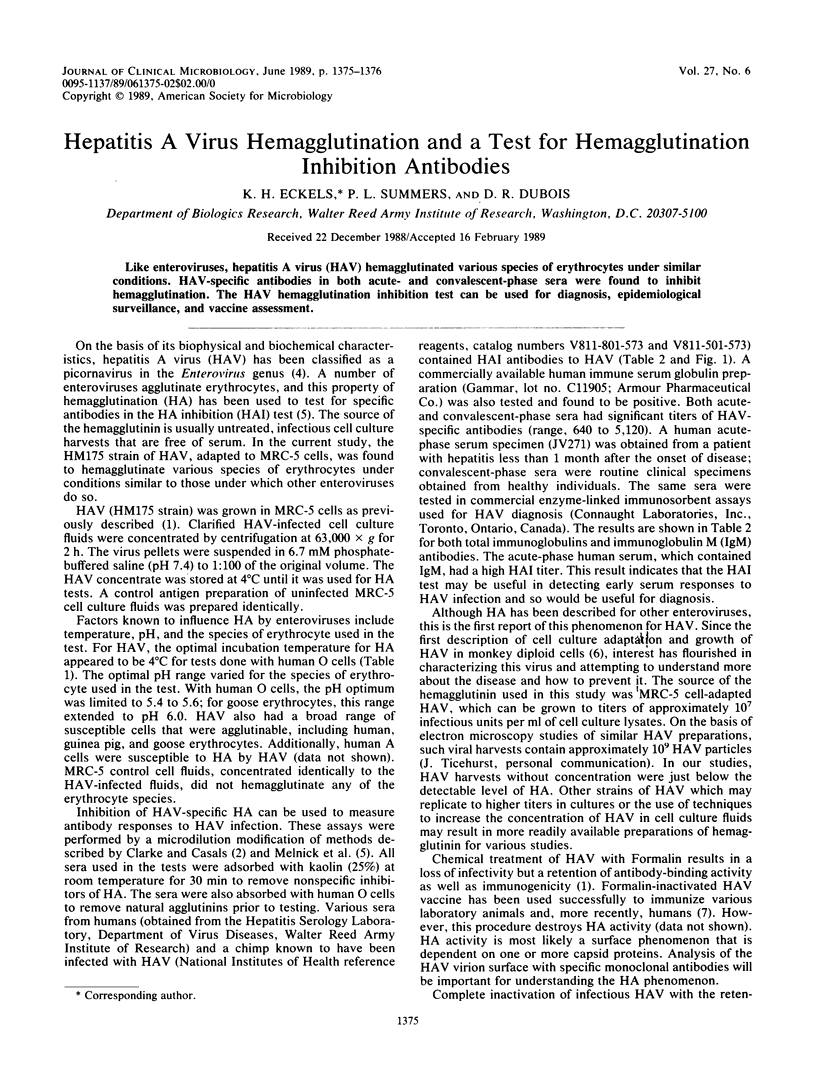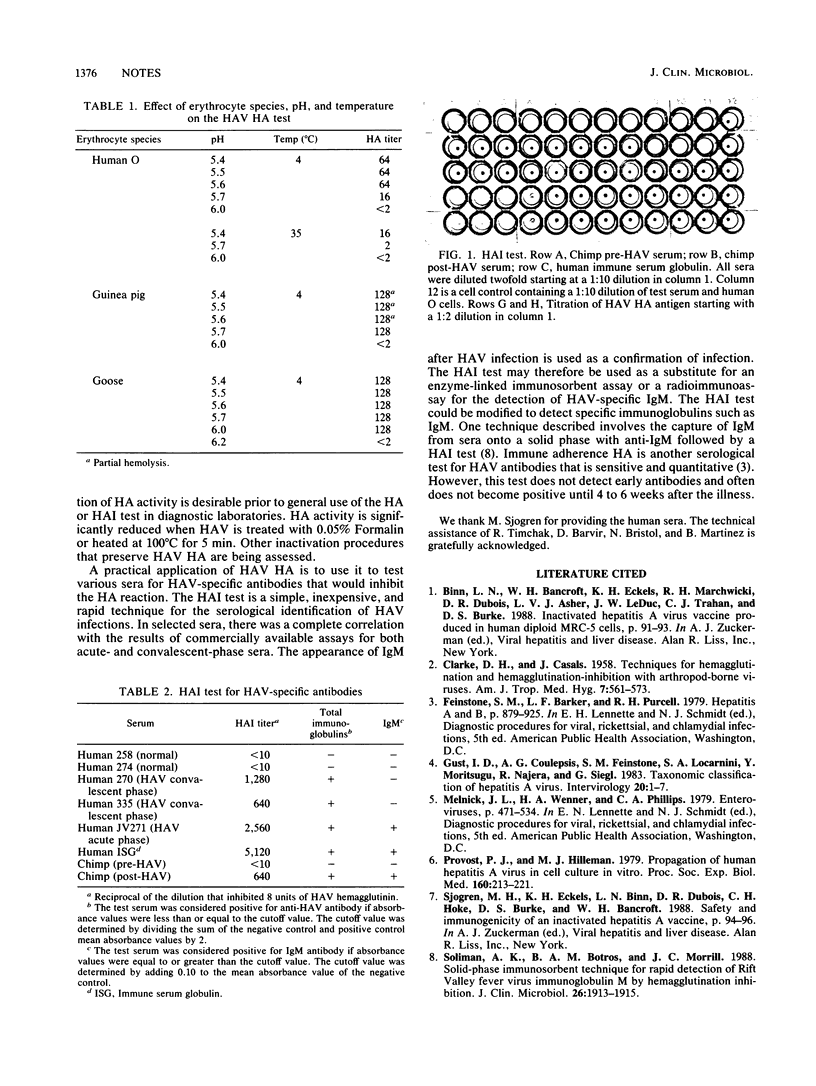Abstract
Like enteroviruses, hepatitis A virus (HAV) hemagglutinated various species of erythrocytes under similar conditions. HAV-specific antibodies in both acute- and convalescent-phase sera were found to inhibit hemagglutination. The HAV hemagglutination inhibition test can be used for diagnosis, epidemiological surveillance, and vaccine assessment.
Full text
PDF

Images in this article
Selected References
These references are in PubMed. This may not be the complete list of references from this article.
- CLARKE D. H., CASALS J. Techniques for hemagglutination and hemagglutination-inhibition with arthropod-borne viruses. Am J Trop Med Hyg. 1958 Sep;7(5):561–573. doi: 10.4269/ajtmh.1958.7.561. [DOI] [PubMed] [Google Scholar]
- Gust I. D., Coulepis A. G., Feinstone S. M., Locarnini S. A., Moritsugu Y., Najera R., Siegl G. Taxonomic classification of hepatitis A virus. Intervirology. 1983;20(1):1–7. doi: 10.1159/000149367. [DOI] [PubMed] [Google Scholar]
- Provost P. J., Hilleman M. R. Propagation of human hepatitis A virus in cell culture in vitro. Proc Soc Exp Biol Med. 1979 Feb;160(2):213–221. doi: 10.3181/00379727-160-40422. [DOI] [PubMed] [Google Scholar]
- Soliman A. K., Botros B. A., Morrill J. C. Solid-phase immunosorbent technique for rapid detection of Rift Valley fever virus immunoglobulin M by hemagglutination inhibition. J Clin Microbiol. 1988 Sep;26(9):1913–1915. doi: 10.1128/jcm.26.9.1913-1915.1988. [DOI] [PMC free article] [PubMed] [Google Scholar]



